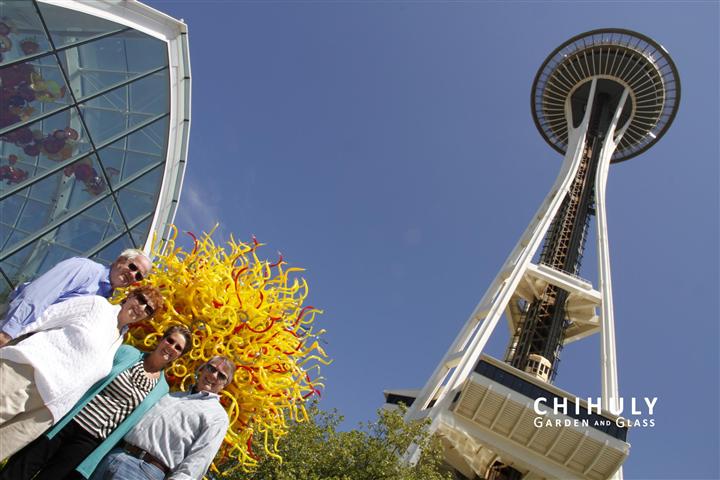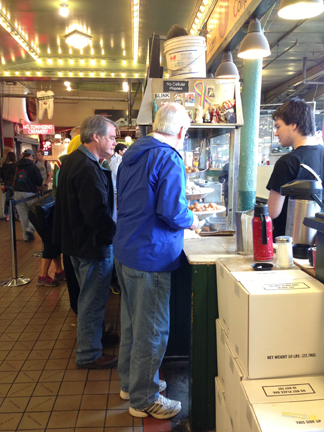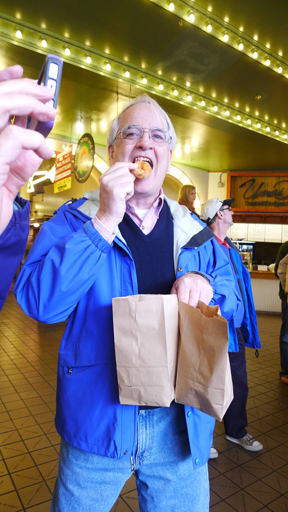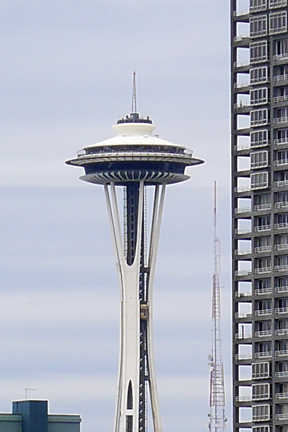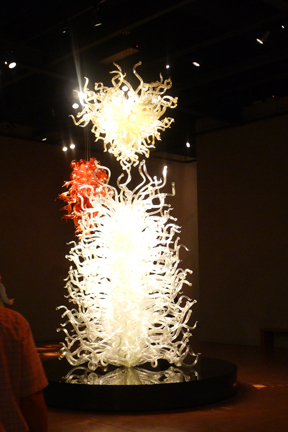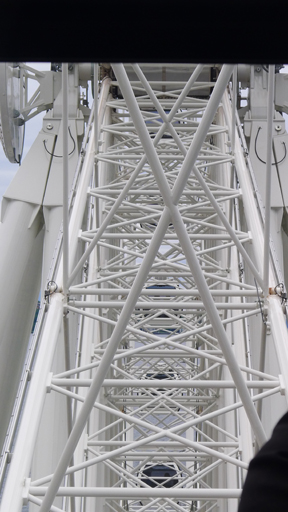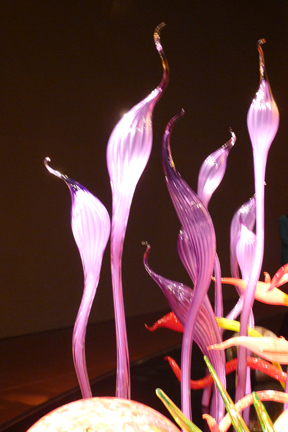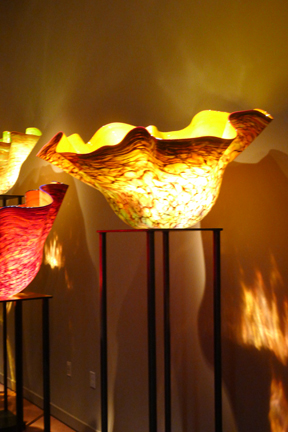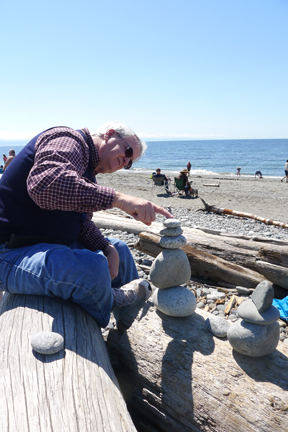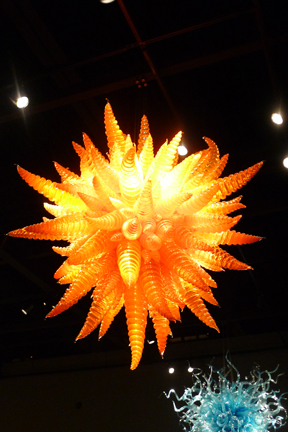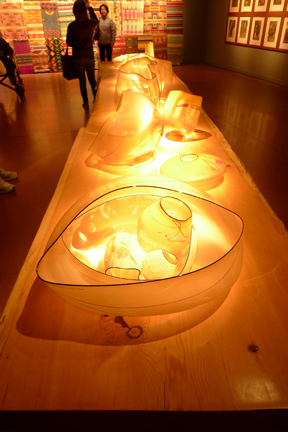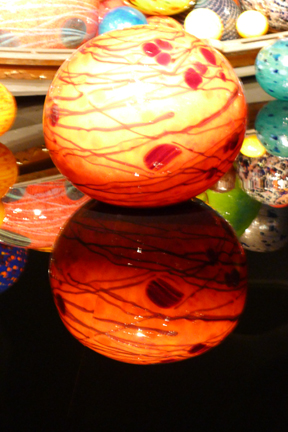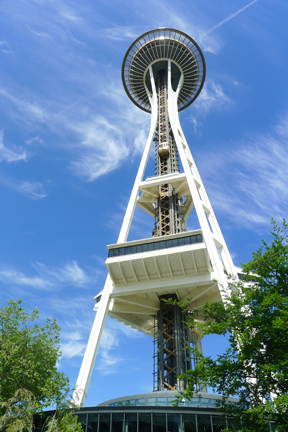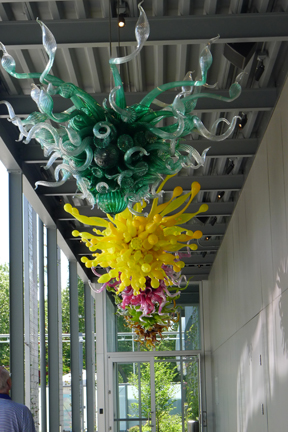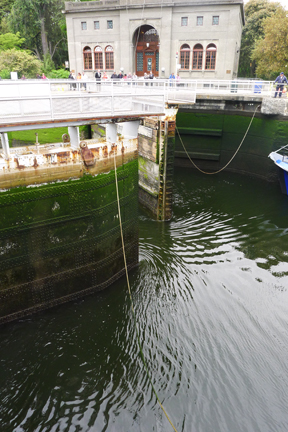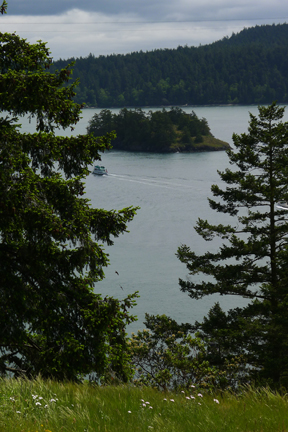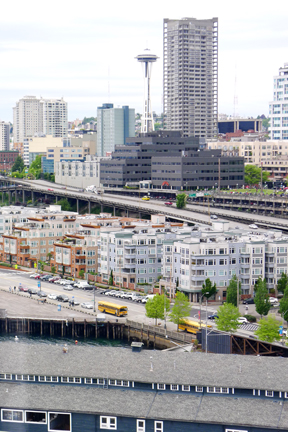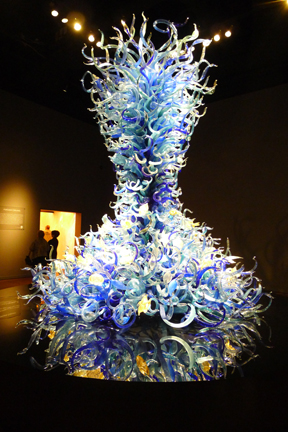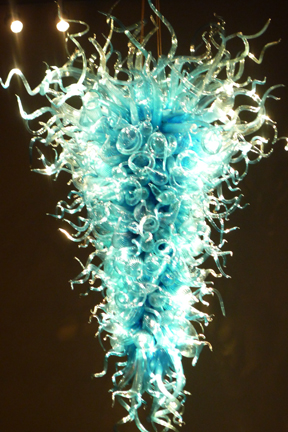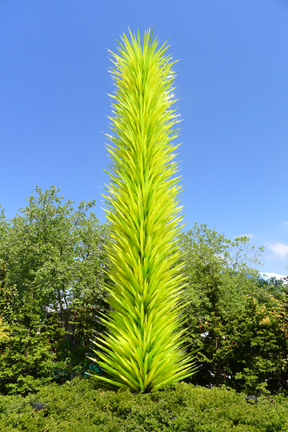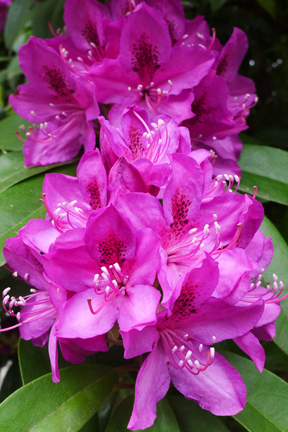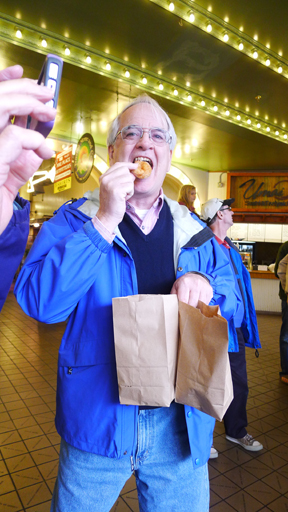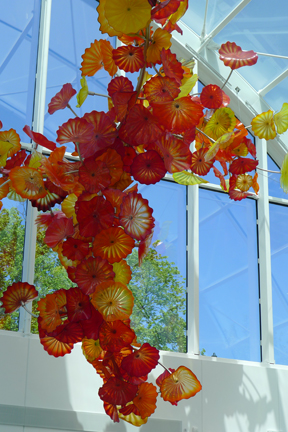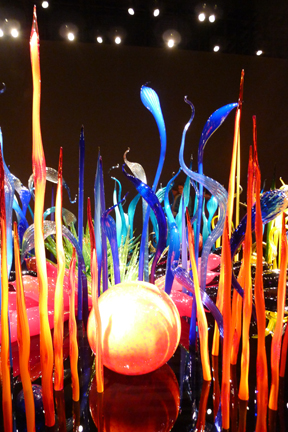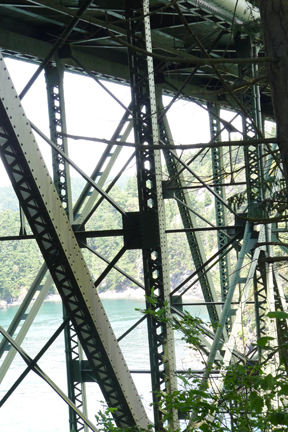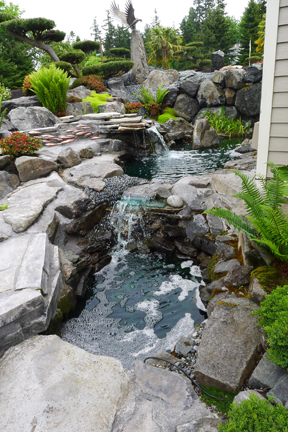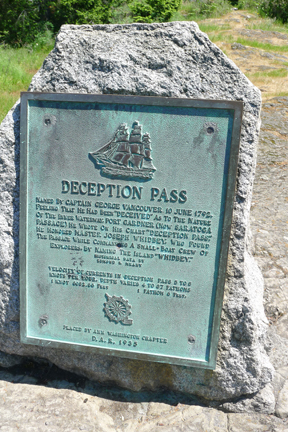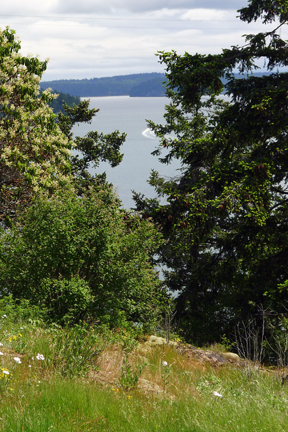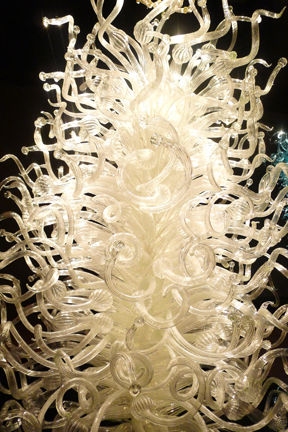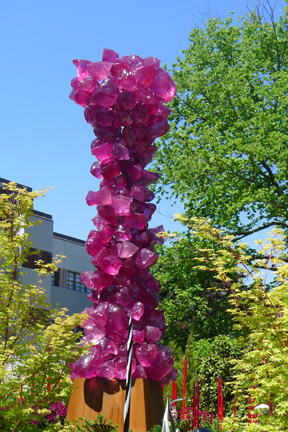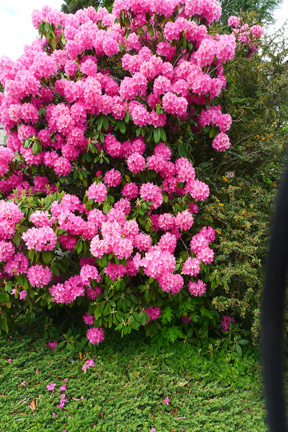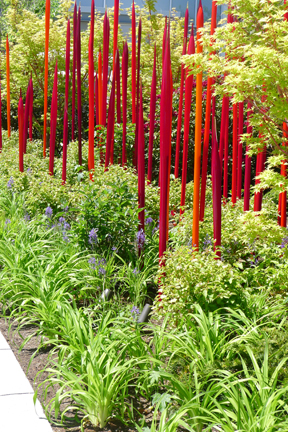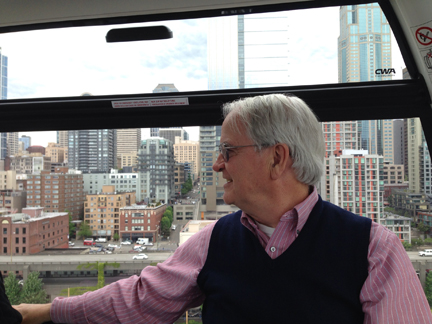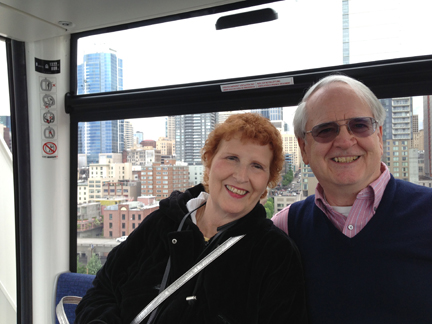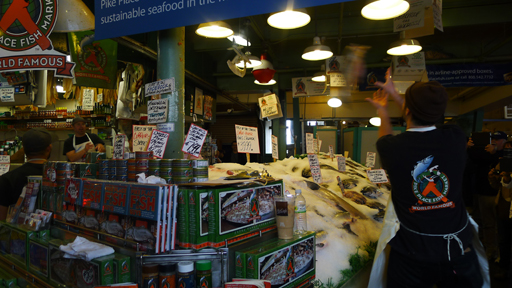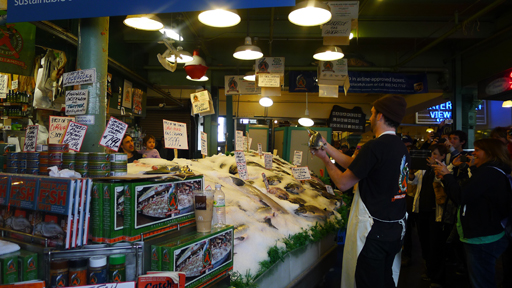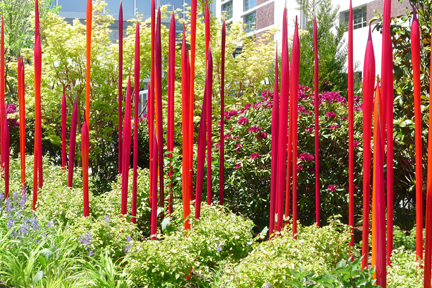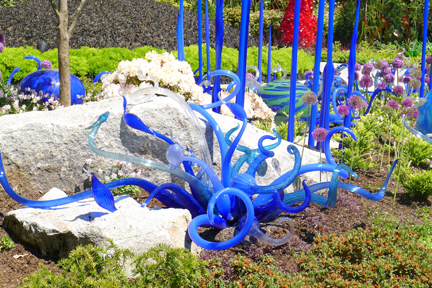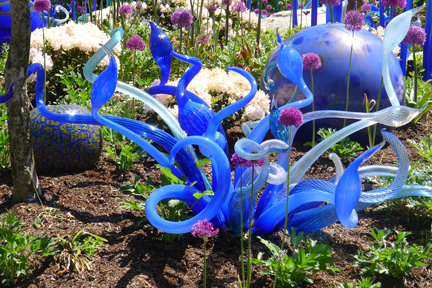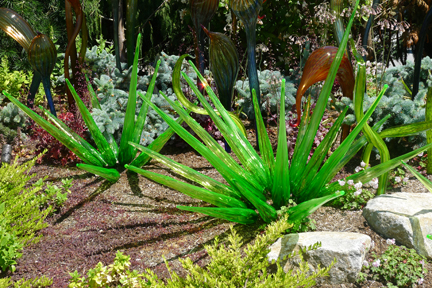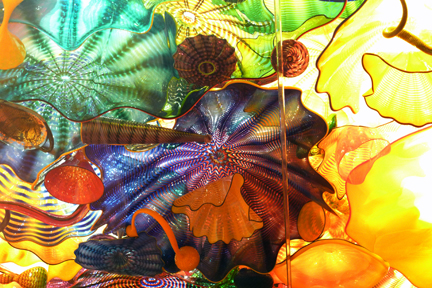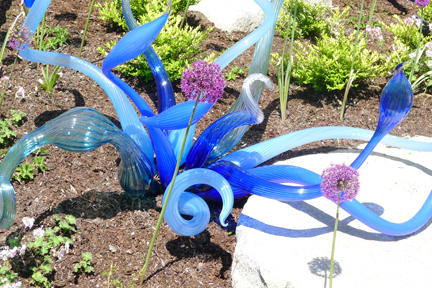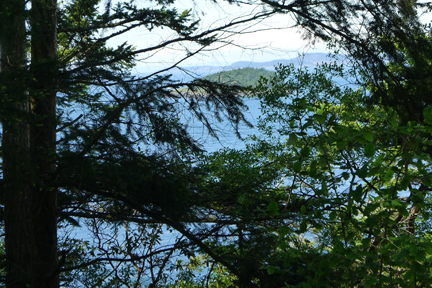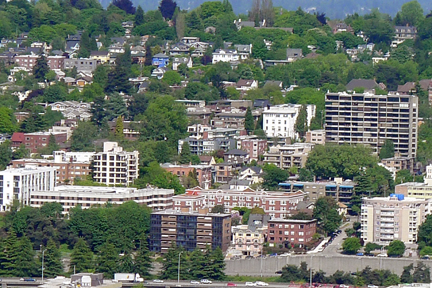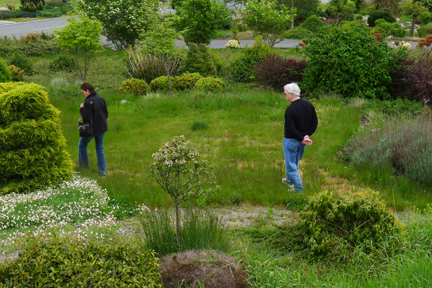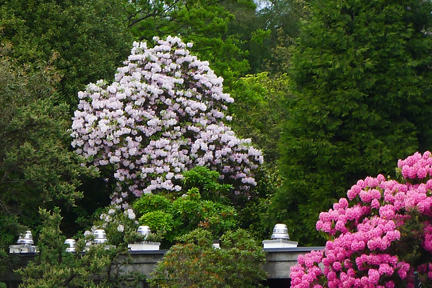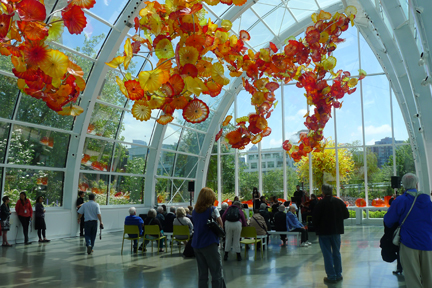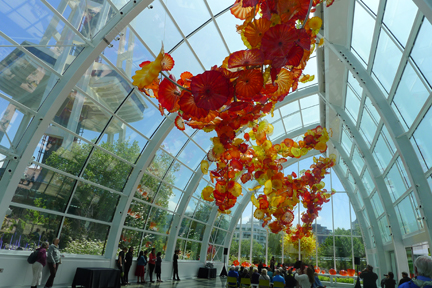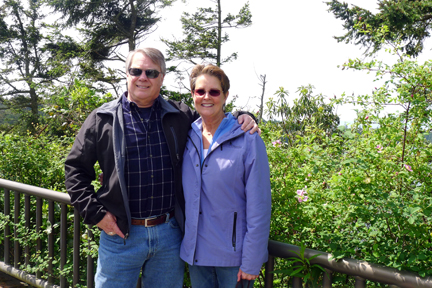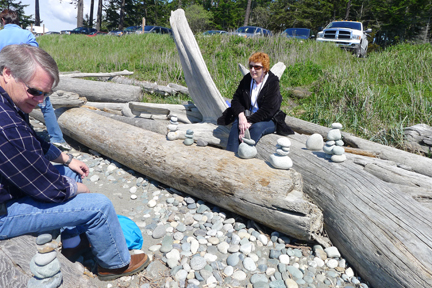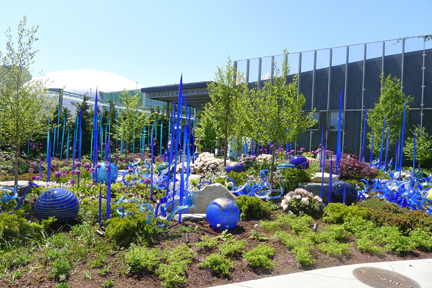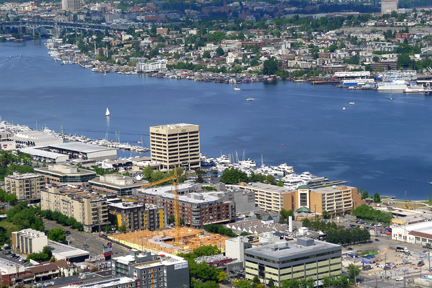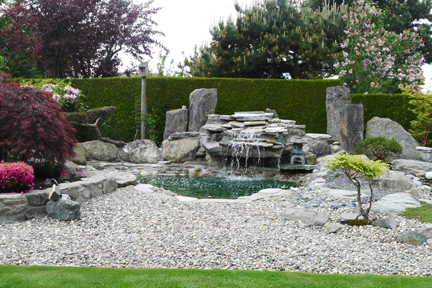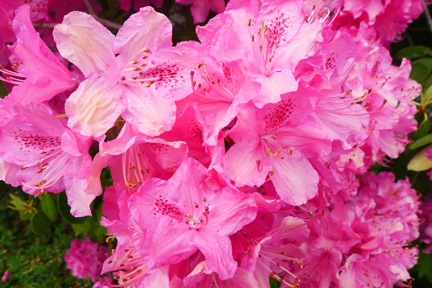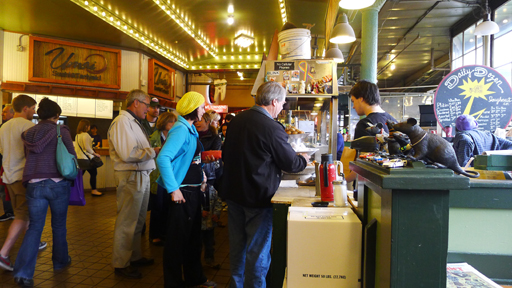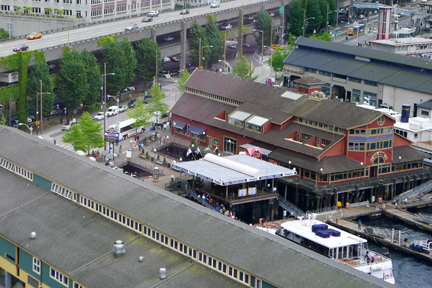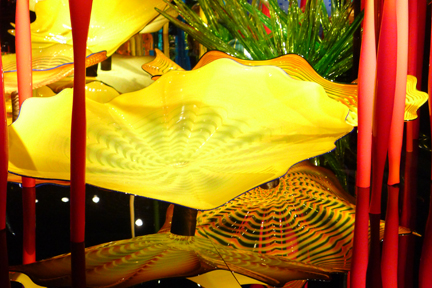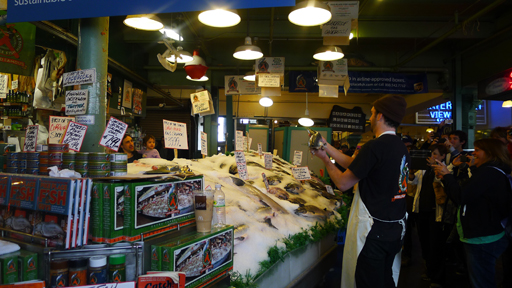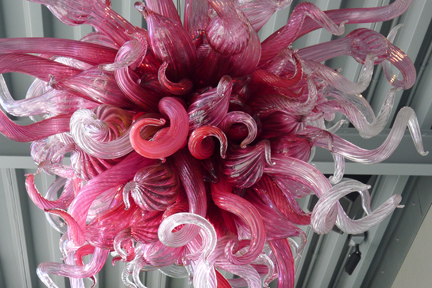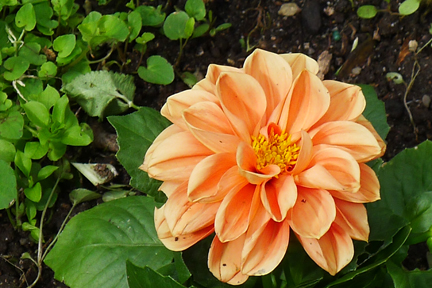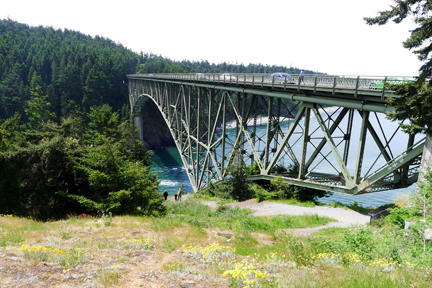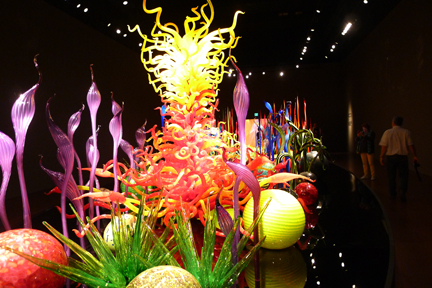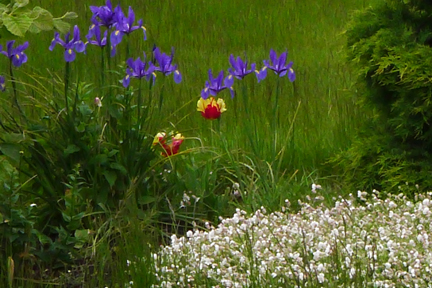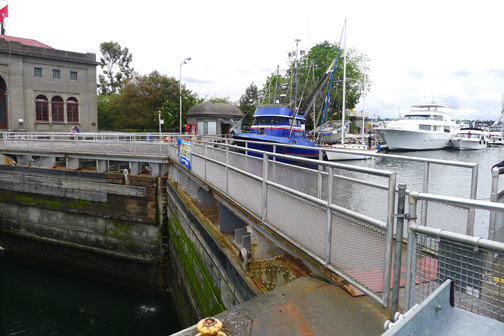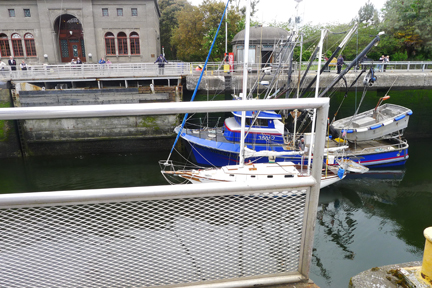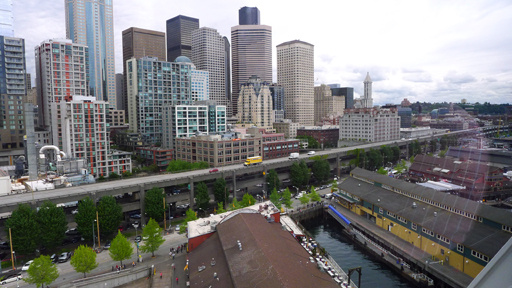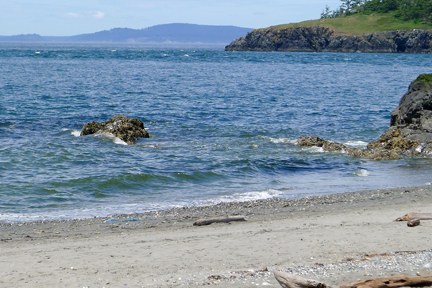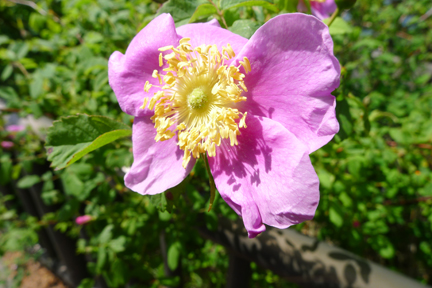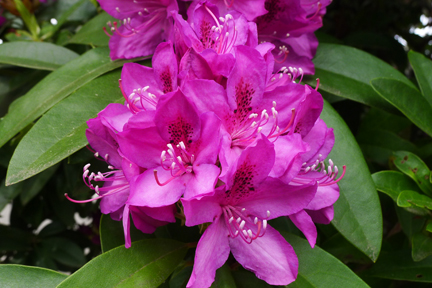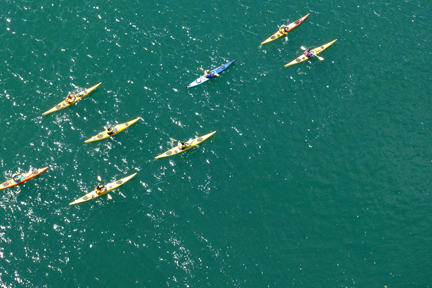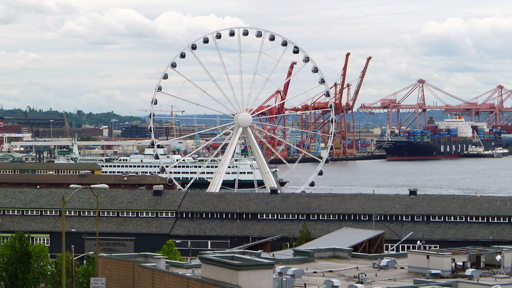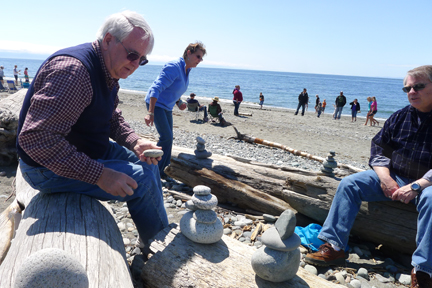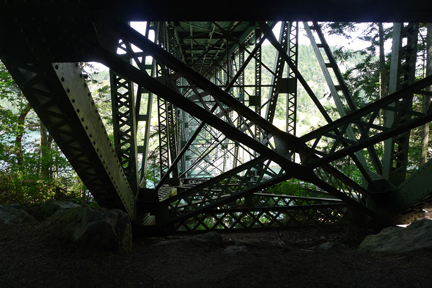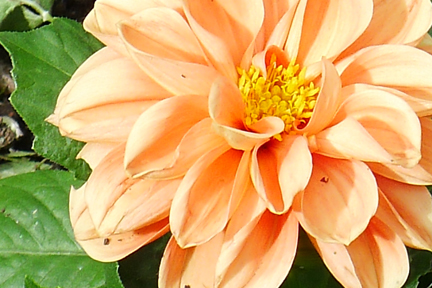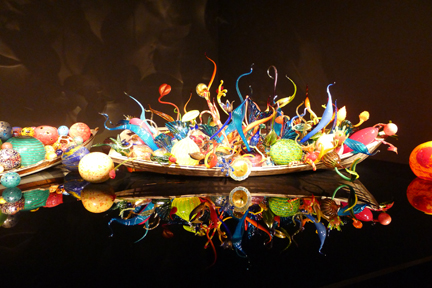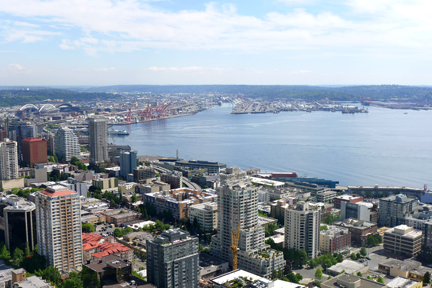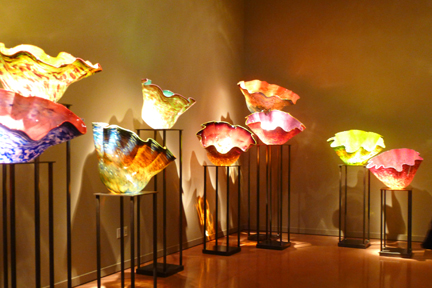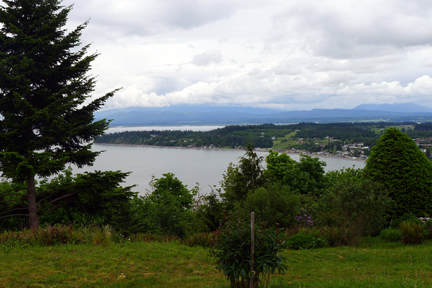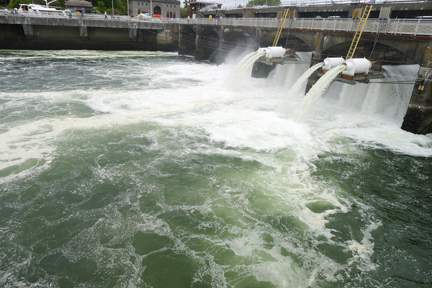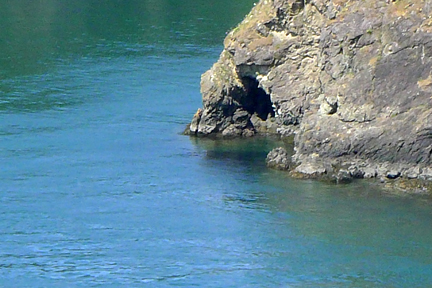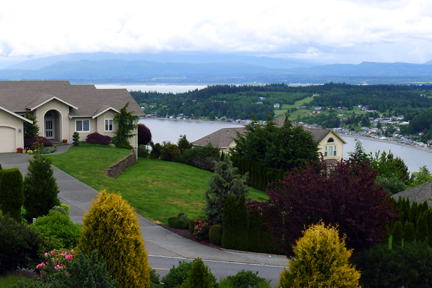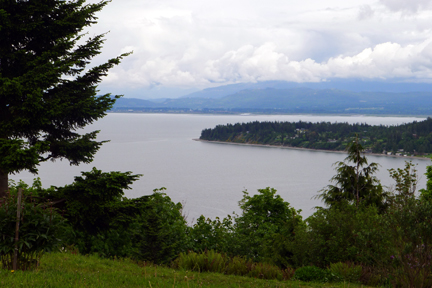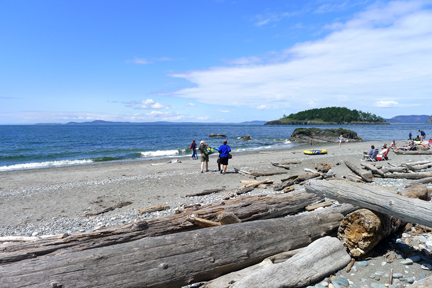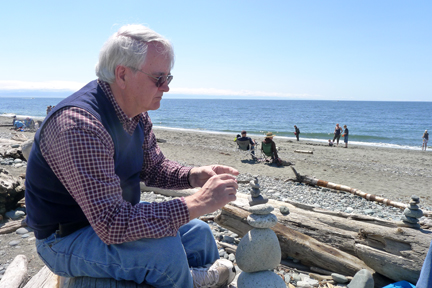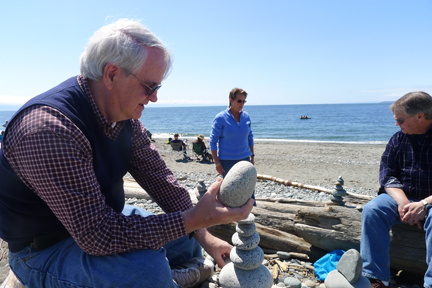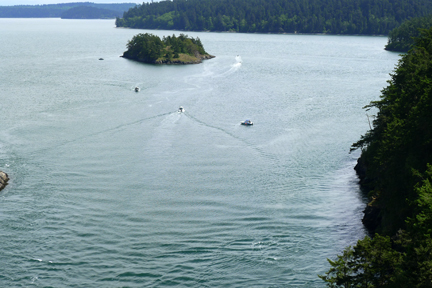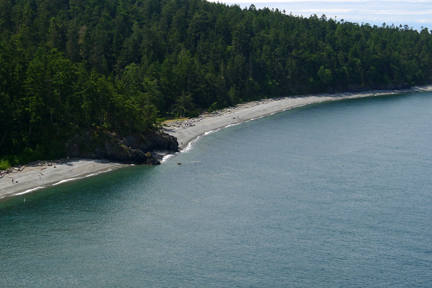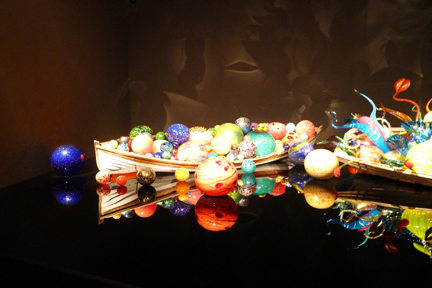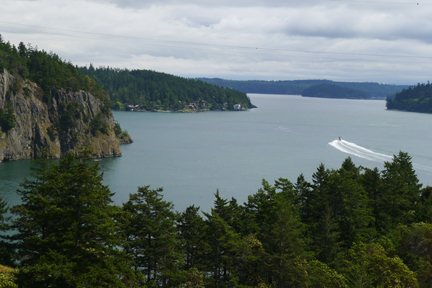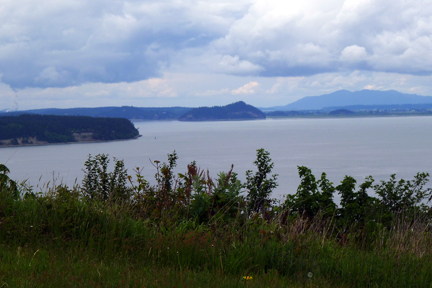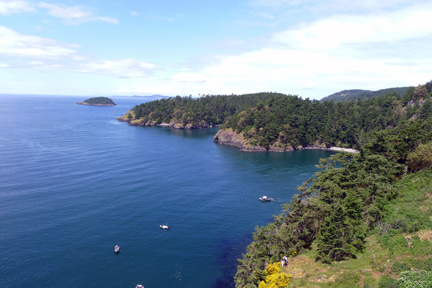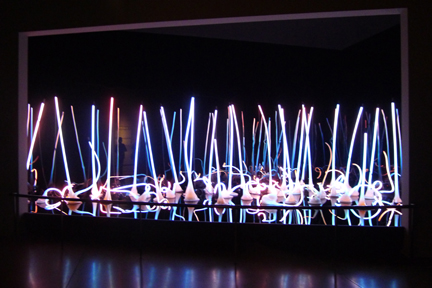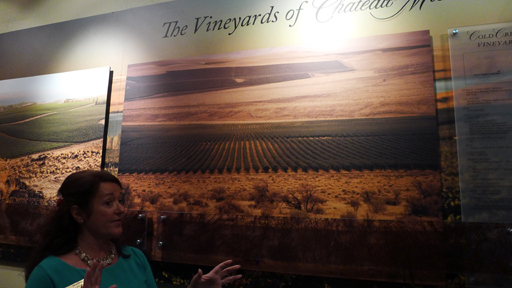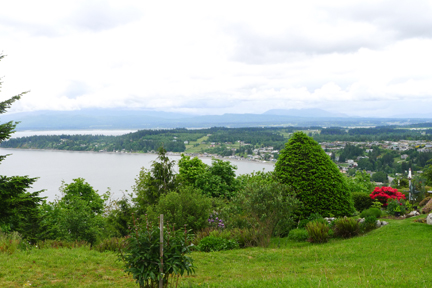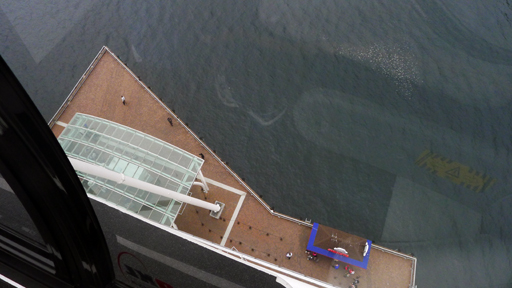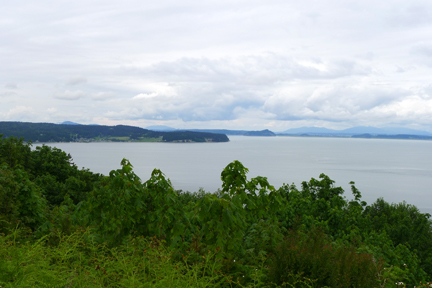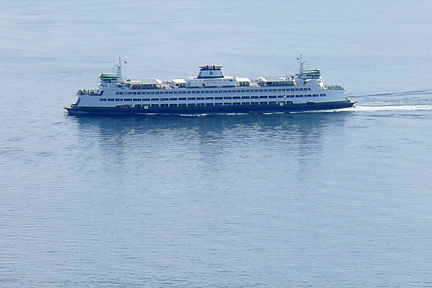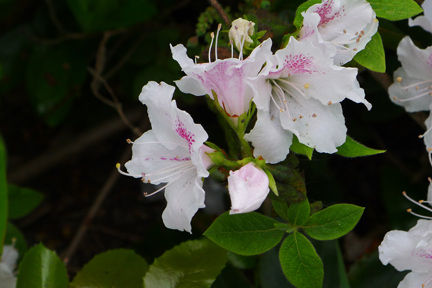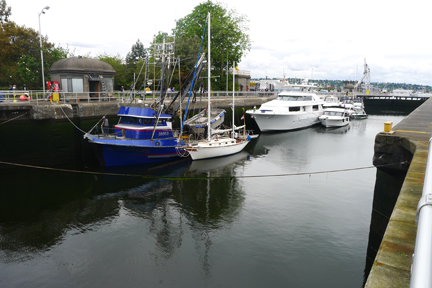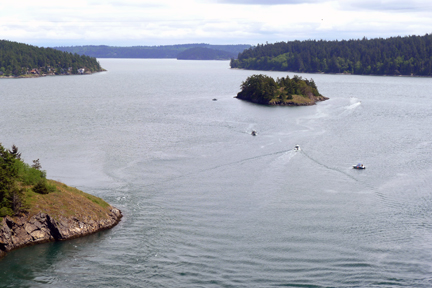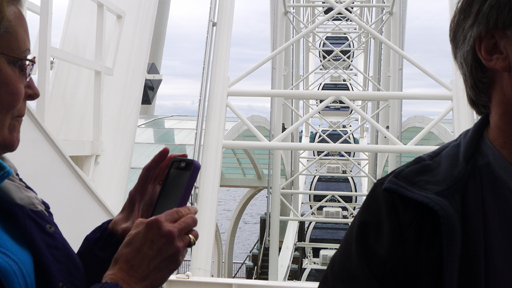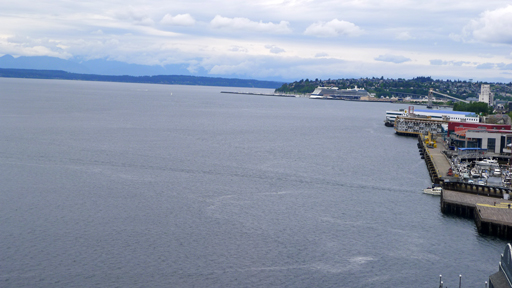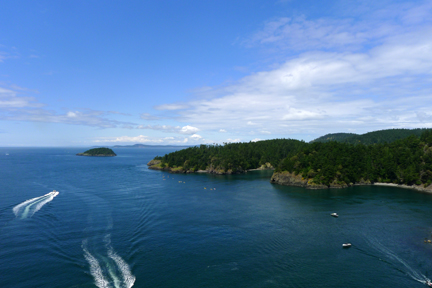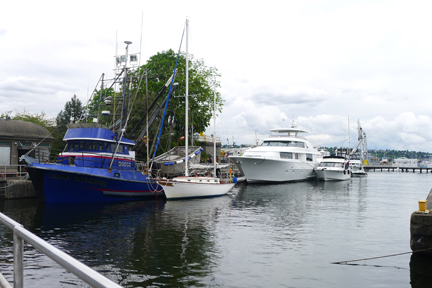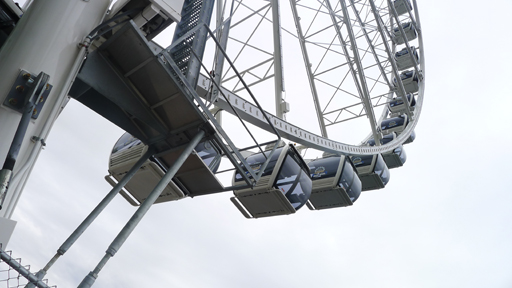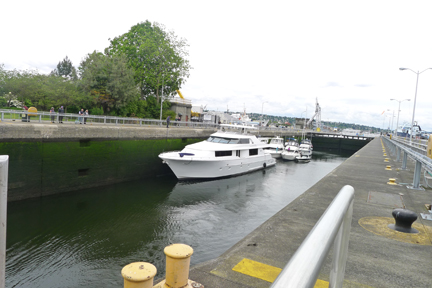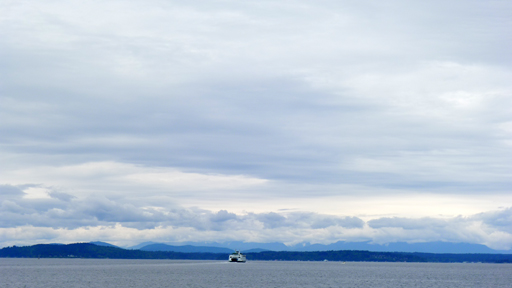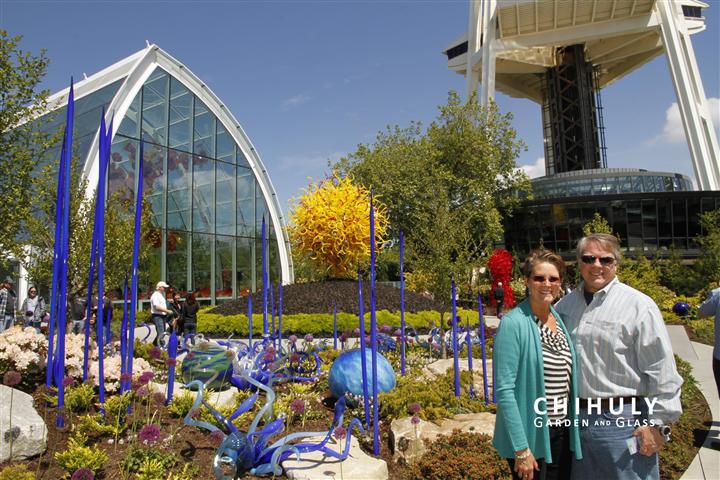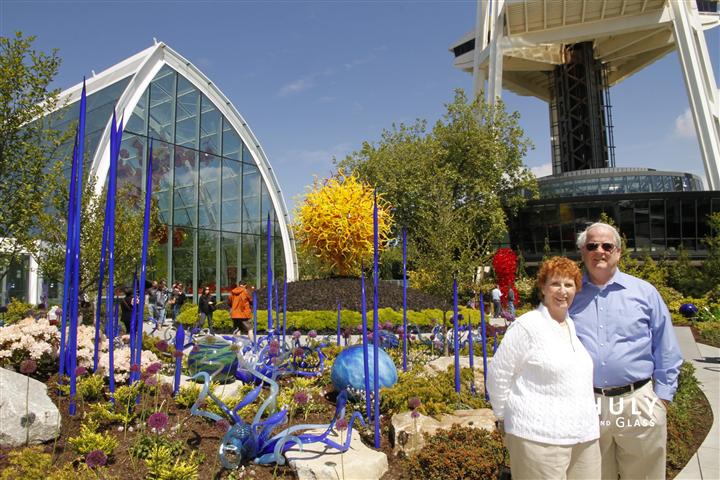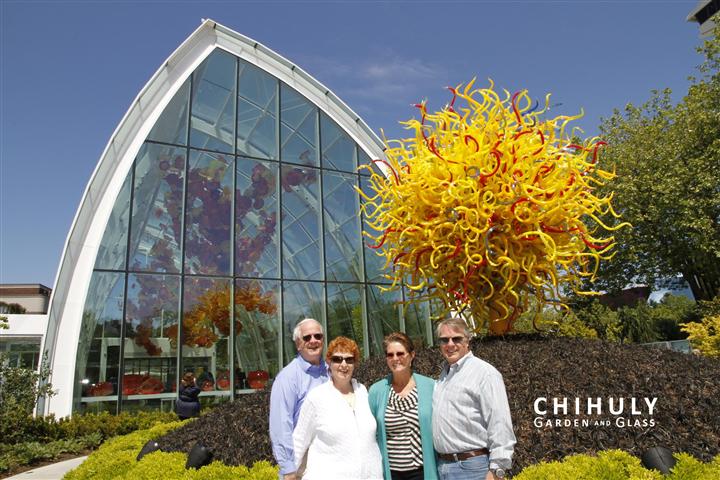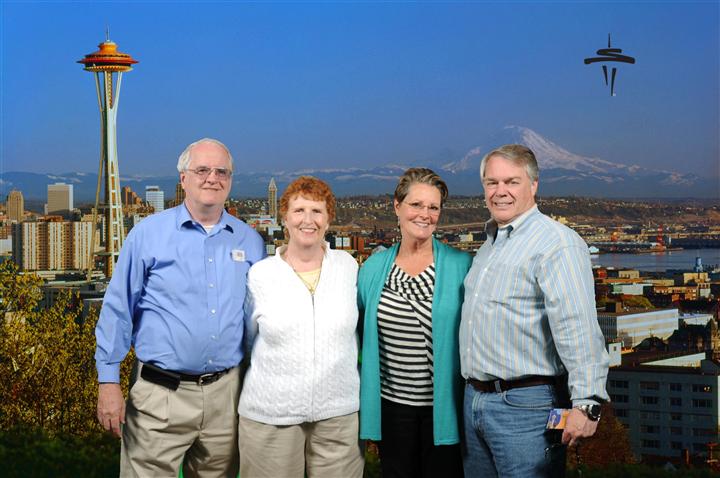A Long Overdue Visit with Patty and Ty in Marysville, WA – May 15, 2013
Mike and I headed out on May 15th to visit with our friends Patty and Ty who moved from San Diego to Marysville, WA. We were lucky to get a direct flight and arrived in Seattle to be greeted by them. After a late lunch we headed back to their house to settle in.
Thursday night we enjoyed a wonderful dinner with our nephew David and Justin. The warmth and conversation sparkled and it was a great time with them. We also followed up with a visit to their Condo in Seattle and marveled at their wonderfully remodeled kitchen and very nice living space.
Our favorite wine is a Riesling called Eroica by Chateau Ste. Michelle. While visiting with Patty and Ty we found that the winery was only a short drive from their house and so we took off one morning to tour the winery. It was an interesting visit and also interesting to note that the wines are grown in Eastern Washington where the land is considerably drier than the Seattle area and the Western side of the State. It was an enjoyable tour and a wonderful day with lots of sunshine.
We headed for Pike Place Market. It is the city’s center for fresh, locally produced food. Established in 1907 to connect citizens and farmers, the Market continues its “Meet the Producer” tradition with a year-round farmers market and locally owned bakeries, seafood, dairy and butcher shops. A nine-acre historic district, the Market features one of the largest craft markets in the country, featuring local, handcrafted goods. The Market is home to more than 200 independent small businesses. We snacked on goodies and made our way through the market. We watched the fish mongers toss the salmon in the air (one picture you can make out a very blurred salmon as it takes flight. Unfortunately my hip doesn’t yet like large crowds and difficulty walking so I was really limping by the time we finished up. Would have loved to spend more time there but the hip just wouldn’t let me.
From there we headed for the The Seattle Great Wheel. It was built in less than a year, but its story goes back much further than that. Seattle businessman Hal Griffith had envisioned a Ferris wheel in the city for nearly 30 years, but it wasn’t until he realized he could build one on his own pier that his dream became a reality. The Seattle Great Wheel opened to the public on June 29, 2012. Since then, it has become an icon of the city and a destination for tourists and locals alike. The Seattle Great Wheel is the largest observation wheel on the west coast, standing 175 feet tall. The wheel has 42 fully-enclosed gondolas. Each gondola seats up to eight people, meaning the wheel can hold over 300 passengers at any given time. The wheel was manufactured in various parts of Europe and the United States, and assembled right at the end of the pier. The wheel extends nearly 40 feet beyond the end of the pier, over Elliott Bay.
The Hiram M. Chittenden Locks, built in 1911 and often nicknamed the Ballard Locks, provides a link for boats between the salt water of Puget Sound and the fresh water of the Ship Canal, which connects eastward to Lake Union and Lake Washington. We enjoyed watching the parade of sailboats, motorboats, tugs, barges and yachts passing through, as the locks’ water levels are adjusted to allow their safe passage. Just north of the locks are the Carl S. English, Jr. Botanical Garden, perfect for a relaxing stroll all year round, and the Visitor Center, which features displays on the history and operations of the Lake Washington Ship Canal.
We also took in the Camano Island Studio Tour! We visited several of the artists’ studios and saw paintings, sculptures, blown glass, and all sorts of artistic gifts. What a temptation. We brought home a yard ornament similar to the spires at the Chihuly Garden and Glass and were tempted by much more. We roamed the area and took lots of pictures and enjoyed a wonderful day despite the overcast skies. Tour of 48 artists, 31 Studios and 3 Galleries features ceramics, fiber and textile wearables, glass, jewelry, masks, sculpture, pastels, photography, printmaking, painting, and wood. Natural Wonders of Camano Island. Our visit to the artists’ shops included a backdrop of wide sandy beaches, bluffs overlooking Utsalady Bay and Saratoga Passage, and stately evergreen forests filled with wildlife.
The island’s sister city, Stanwood, also hosts places to stretch your legs and capture a few
photos. Heritage Park and Church Creek Park are both located in town where two studio tour galleries are located. A third Stanwood studio site is located a short distance from town, in a pastoral setting near Lake Ketchum.
We also took time to explore Deception Pass. Deception Pass State Park is a 4,134-acre marine and camping park with 77,000 feet of saltwater shoreline, and 33,900 feet of freshwater shoreline on three lakes. Rugged cliffs drop to meet the turbulent waters of Deception Pass. We saw outstanding, breath-taking views and old-growth forests.
The Deception Pass area has been home to various Coast Salish tribes for thousands of years. The first Europeans to see Deception Pass were members of the 1790 expedition of Manuel Quimper on the Princesa Real. The Spanish gave it the name Boca de Flon. A group of sailors led by Joseph Whidbey, part of the Vancouver Expedition, found and mapped Deception Pass on June 7, 1792. George Vancouver gave it the name “Deception” because it had misled him into thinking Whidbey Island was a peninsula.[3] The “deception” was heightened due to Whidbey’s failure to find the strait at first. In May 1792, Vancouver was anchored near the southern end of Whidbey Island. He sent Joseph Whidbey to explore the waters east of Whidbey Island, now known as Saratoga Passage, using small boats. Whidbey reached the northern end of Saratoga Passage and explored eastward into Skagit Bay, which is shallow and difficult to navigate. He returned south to rejoin Vancouver without having found Deception Pass. It appeared that Skagit Bay was a dead-end and that Whidbey Island and Fidalgo Island were a long peninsula attached to the mainland. In June the expedition sailed north along the west coast of Whidbey Island. Vancouver sent Joseph Whidbey to explore inlets leading to the east. The first inlet turned out to be a “very narrow and intricate channel, which…abounded with rocks above and beneath the surface of the water”. This channel led to Skagit Bay, thus separating Whidbey Island from the mainland. Vancouver apparently felt he and Joseph Whidbey had been deceived by the tricky strait. Vancouver wrote of Whidbey’s efforts: “This determined the shore they had been exploring to be an island, which, in consequence of Mr. Whidbey’s circumnavigation, I distinguished by the name of Whidbey’s Island: and this northern pass, leading into Skagit Bay, Deception Passage”. Plaque explaining the history of Deception Pass “Deception Pass – Named By Captain George Vancouver 10 June 1792. Feeling That He Had Been “Deceived” As To The Nature Of The Inner Waterway, Port Gardner (Now Saratoga Passage) he Wrote On His Chart “Deception Pass.”
In the waters of Deception Pass, just east of the present-day Deception Pass Bridge, is a small island known as Ben Ure Island. The island became infamous for its activity of smuggling illegal Chinese immigrants for local labor. Ure and his partner Lawrence “Pirate” Kelly were quite profitable at their smuggling business and played hide-and-seek with the United States Customs Department for years. Ure’s own operation at Deception Pass in the late 1880s consisted of Ure and his Native-American wife. Local tradition has it that his wife would camp on the nearby Strawberry Island (which was visible from the open sea) and signal him with a fire on the island’s summit to alert him to whether or not it was safe to bring his illegal cargo ashore. For transport, Ure would tie the illegal immigrants up in burlap bags so that if customs agents were to approach then he could easily toss the bags overboard. The tidal currents would carry the discarded immigrants’ bodies to San Juan Island to the north and west of the pass and many ended up in what became known as Dead Man’s Bay.
Between the years 1910 and 1914, a prison rock quarry was operated on the Fidalgo Island side of the pass. Nearby barracks housed some 40 prisoners, members of an honors program out of Walla Walla State Penitentiary and the prison population was made up of several types of prisoners, including those convicted of murder. Guards stood watch at the quarry as the prisoners cut the rock into gravel and loaded it onto barges located at the base of the cliff atop the pass’s waters. The quarried rock was then taken by barge to the Seattle waterfront. The camp was dismantled in 1924 and although abandoned as a quarry, the remains of the camp can still be found. The location, however, is hazardous and over the years there have been several fatal accidents when visitors have ventured onto the steep cliffs.
Upon completion on July 31, 1935, the 976-foot (297 m) span Deception Pass Bridge connected Whidbey Island to the tiny Pass Island, and Pass Island to Fidalgo Island. Prior to the bridge, travelers and businessmen would use an inter-island ferry to commute between Fidalgo and Whidbey islands.
After exploring the area around the bridge we headed for the Cranberry Lake area, part fresh water and part salt water. Here Patty explored looking for rock formations for her gardens and Mike and Ty joined in for the fun.
On one of our gorgeous days we ventured out to the Chihully Garden and Glass and the Space Needle. The hand blown glass at Chihully was gorgeous to see and take pictures of. It was fascinating to see Dale Chihuly’s imagination at work. Since Seattle hosted the World’s Fair in 1962, the Seattle Center has remained an integral part of the local community. The iconic Space Needle is an important reminder of the dreams of that time. Owned and managed by the Wright family, children of Howard S. Wright II who constructed it, the Space Needle continues to be an icon for innovation, originality and imagining the future.
When the opportunity to reinvigorate Seattle Center arose, the Wright family took interest. They invited Northwest artist, Dale Chihuly, to present a comprehensive collection of his work. Having always loved the Space Needle, Chihuly was delighted with the opportunity to design an Exhibition Hall, a Garden installation and a Glasshouse in his own community. Through its community partners, Chihuly Garden and Glass supports opportunities for education and involvement in the arts.
Through the work of artist Dale Chihuly, we celebrate our region’s creative energy and inspire visitors to engage with our region’s cultural community.
After the Chihuly we headed to the top of the Space Needle where we could see the City of Seattle at our feet. The view was spectacular with a combination of buildings and water ways. The Eiffel Tower, The Statue of Liberty all were smogged in when we saw them. We got lucky with the Space Needle as the sky was clear and sunny.
Thank you much to Patty and Ty for providing us with a warm welcome, great friendship, a place to sleep and a tour of the Seattle/Marysville Area. It was great having the time to spend with them and we will just have to try again after a while to see if we can make it back to that area.






